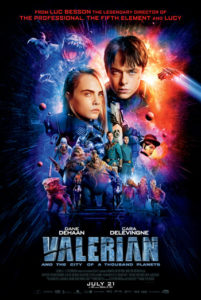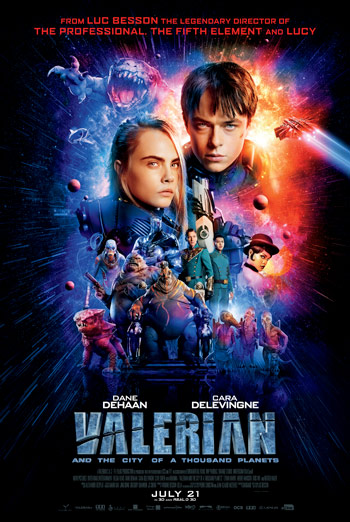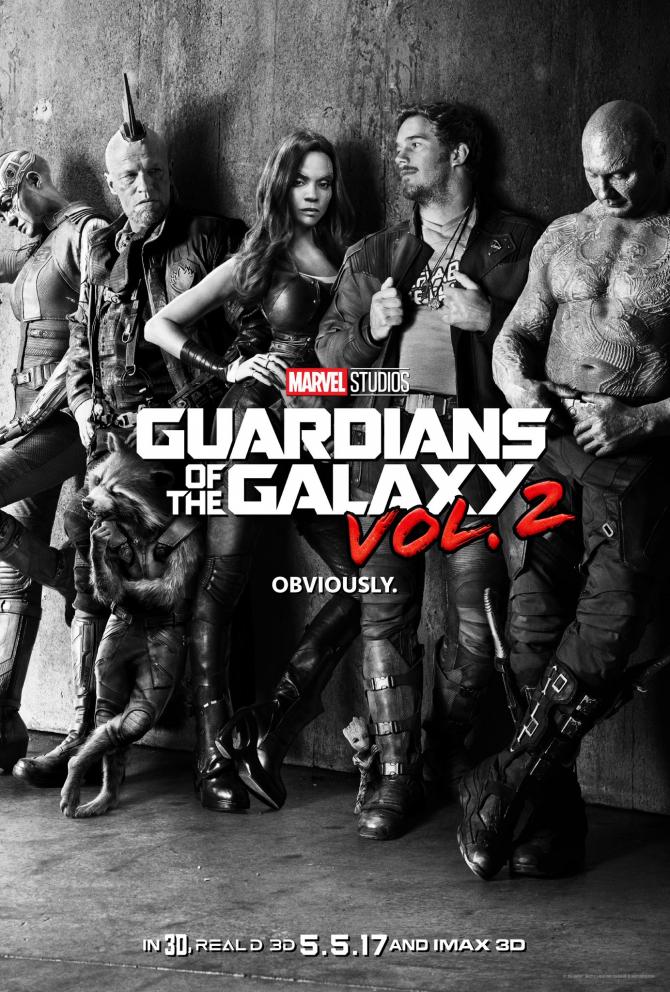Valerian and the City of a Thousand Planets
Posted on August 1, 2017 at 4:55 pm
B +| Lowest Recommended Age: | Middle School |
| MPAA Rating: | Rated PG-13 for sci-fi violence and action, suggestive material and brief language |
| Profanity: | Brief strong language |
| Alcohol/ Drugs: | Alcohol |
| Violence/ Scariness: | Extended sci-fi/action violence, guns, chases, characters injured and killed including genocide |
| Diversity Issues: | A theme of the movie |
| Date Released to Theaters: | July 21, 2017 |
| Date Released to DVD: | November 21, 2017 |

That hero would be Valerian (Dane DeHaan), who has gone to the strip club in search of the disguise he needs to infiltrate an alien compound and rescue the woman he loves, his space partner Laureline (Cara Delevingne). She was captured as the two of them were on a mission to…oh, who cares what the mission was? It’s your basic save the universe stuff. You know and I know and they know you are not there for the subtleties of the space city that incorporates, “Zootopia”-style, every possible creature and culture, a veritable Pepperland of comity and the exchange of learning. In the opening scenes, we see the history of the place, as human astronauts welcome aboard an increasing variety of visitors with a warm handshake, first from other countries, and then from other planets and galaxies, still with something as close to a handshake as possible.
This is the movie Luc Besson has wanted to make since he was a teenager, base on a French comic book series from the 1960’s with a visionary aesthetic that inspired Besson’s own “5th Element” and George Lucas’ “Star Wars.” He had to wait decades until the technology made it possible to do the ravishing visuals justice. That is the good news and the bad news. The good news is that the visuals are indeed ravishing, worth a couple of viewings on the biggest screen you can find and then a couple more when you can watch it at home and hit “pause” to see every detail. The bad news is that the storyline has not held up as well over the years as the settings, in part because much of it has also been appropriated, too, over the years, partly because times have changed, and partly because it wasn’t that great to begin with. Valerian and Laureline banter back and forth about whether he can make a commitment to her as they try to save the world. It is supposed to be part of the fun of the story that they are cool and casual. Valerian even wears a Hawaiian shirt at one point instead of his spiffy spacesuit (they are undercover as tourists). But their characters are so bland, especially by contrast with the wildly imaginative world they are racing through, that it drags on the storyline. That’s disappointing because it distracts from some promising flickers of substance.
Parents should know that this film includes extensive sci-fi peril, action, and violence with many guns and blasters, characters injured and killed, sad deaths, references to genocide, corruption, brief strong language, provocative dance and references to prostitution.
Family discussion: Why do Valerian and Laureline disagree about the converter? How do you know when to break the rules?
If you like this, try: “Avatar” and “The Fifth Element”








